Bio Sketches of Awardees | Year |
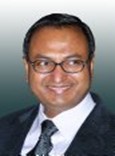 Dr. Ishwer Datt Gupta, for the last forty years, has worked and significantly contributed in the following areas of Strong Motion Earthquake Studies: Dr. Ishwer Datt Gupta, for the last forty years, has worked and significantly contributed in the following areas of Strong Motion Earthquake Studies:
- Uniformly Processed Strong Motion Database
- Ground Motion Prediction Models
- Multifaceted Probabilistic Seismic Hazard Analysis
- Seismic Zoning and Microzoning
- Stochastic Structural Dynamics
- Dynamic Response Analysis of Dams
Dr. Gupta has been conducting basic and applied research in Engineering Seismology and Structural Dynamics since 1980, published over 150 research papers, prepared over 140 project-specific study reports, and supervised eight Ph.D. theses. Dr. Gupta joined CWPRS Pune as a Research Officer in 1979, rose to the highest position of Director in 2009, and retired on superannuation in 2013. He joined CWPRS after completing his M.Sc. and M.Phil. in Physics from Delhi and Meerut Universities, respectively. He then completed M.S. (Civil Engineering) with a specialization in Earthquake Engineering from the University of Southern California, USA in 1985 under a United States Development Program Fellowship awarded to him. Subsequently, he completed his Ph.D. from Poona University in 1987 on the dissertation “Risk Based Seismic Response Analysis of Structures – A Stochastic Approach”. Dr. Gupta has been the recipient of ISET best paper awards for 1986 & 1988 and the Indian Mining Journal Golden Jubilee Award for outstanding contribution to R&D in Civil Engineering. He had been a visiting scholar to the University of Southern California to participate in the project ‘Seismic Risk Studies in Structural Dynamics during September to December 1995 and an Honorary Fellow to IIT Roorkee during 2014 to 2017. | Rs. 30,000/-
Year 2022 |
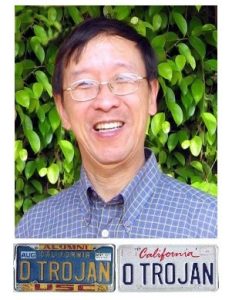 Prof. Vincent W. Lee, for the last thirty years has worked and significantly contributed in the following areas of Strong Motion Earthquake Studies: Prof. Vincent W. Lee, for the last thirty years has worked and significantly contributed in the following areas of Strong Motion Earthquake Studies:
- Strong-motion Data Processing
- Earthquake Data Information System
- Regression and Scaling of Earthquake Strong-motion Parameters
- Synthetic Earthquakes, Artificial Accelerograms
- Seismic Risk Analysis, Microzonation Studies
- Elastic and Poro-elastic Wave Diffraction
- Soil-Structure Interaction
Prof. Lee has been teaching Civil Engineering courses since 1980, supervised 20 PhD theses, and has over 150 Journal publications, over 50 research reports and over 70 conference presentations. Prof. Lee joined the University of Southern California (USC) as an Assistant Professor in 1983. Prior to that he was a post-doctorate researcher at USC, after completing his PhD studies in the same university. He was originally a Mathematics major, completing his B.Sc. and M.Sc. in Mathematics at California Institute of Technology (Cal Tech), 1969-1974, after which he switched his major in Applied Mechanics at Cal Tech and finally to Civil Engineering at USC. In 2009, Prof. Lee received the Exceptional Service Award at the Sonny Astani Civil & Environmental Engineering Department at U.S.C. In 2005, he was awarded the George V. Chillingar medal of Honor, “Scientists without Borders” Award, Russian Academy of Natural Sciences. In 2003, he received “Peter the Great Award” Medal, Russian Academy of Natural Sciences. He was an Invited Honor Professor in School of Civil Engineering, Tianjin University, China in 2002, and an elected Foreign member of the National Academy of Engineering of Armenia in 1998. | Rs. 30,000/- Year 2018 |
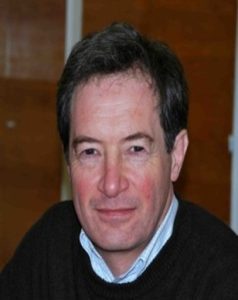 Dr. Pierre-Yves Bard is a senior research scientist at ISTERRE Grenoble (Institute of Earth Sciences, University of Grenoble-Alpes), and at IFSTTAR (a public laboratory dedicated to civil engineering and transportation infrastructures). After basic education in Science at the Polytechnic School in Paris (1973-1976), Dr. Bard received a Civil Engineering diploma from the Bridges and Roads Engineering School in Paris (ENPC, 1978), and a Ph.D. in Geophysics/Seismology at the Joseph Fourier University in Grenoble (1983). Since then, he has been working mainly as a researcher in engineering seismology, trying to bridge the gap between seismologists and earthquake engineers. His research is related with estimation of strong ground motion, with a special emphasis on any kind of site effects related with near-surface heterogeneities, including those related with soil-structure interaction. Examples of his recent scientific achievements are the SESAME, NERIES and NERA European projects, with a strong emphasis on the use of ambient vibrations for site characterization, the propositions of a new seismic zonation in France with new spectra, and extensive bench marking and use of advanced models for numerical simulation of wave propagation in complex 3D or Non-linear media. Dr. Bard has supervised about 35 Ph.D. students, taught in post-graduate courses at several French Universities (Grenoble, Strasbourg, Paris) and international training courses (GFZ Potsdam/UNESCO); coauthored around 100 papers in peer reviewed international journals, twice more in conference proceedings, and many grey reports for the engineering community. Dr. Pierre-Yves Bard is a senior research scientist at ISTERRE Grenoble (Institute of Earth Sciences, University of Grenoble-Alpes), and at IFSTTAR (a public laboratory dedicated to civil engineering and transportation infrastructures). After basic education in Science at the Polytechnic School in Paris (1973-1976), Dr. Bard received a Civil Engineering diploma from the Bridges and Roads Engineering School in Paris (ENPC, 1978), and a Ph.D. in Geophysics/Seismology at the Joseph Fourier University in Grenoble (1983). Since then, he has been working mainly as a researcher in engineering seismology, trying to bridge the gap between seismologists and earthquake engineers. His research is related with estimation of strong ground motion, with a special emphasis on any kind of site effects related with near-surface heterogeneities, including those related with soil-structure interaction. Examples of his recent scientific achievements are the SESAME, NERIES and NERA European projects, with a strong emphasis on the use of ambient vibrations for site characterization, the propositions of a new seismic zonation in France with new spectra, and extensive bench marking and use of advanced models for numerical simulation of wave propagation in complex 3D or Non-linear media. Dr. Bard has supervised about 35 Ph.D. students, taught in post-graduate courses at several French Universities (Grenoble, Strasbourg, Paris) and international training courses (GFZ Potsdam/UNESCO); coauthored around 100 papers in peer reviewed international journals, twice more in conference proceedings, and many grey reports for the engineering community.
| Rs. 30,000/- Year 2014 |
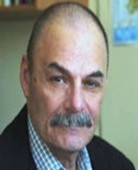 Prof. Alexander A. Gusev obtained Diploma (MS Degree) in Physics from Moscow State University in 1967, Ph.D. from Schmidt Institute of the Earth, Moscow in 1978. He received Doctor of Science (Senior Doctor) at the Schmidt Institute of Physics of the Earth, Moscow in 1994. He started as Junior Researcher in 1967 in Schmidt Institute of Physics of the Earth, Ac. Sc., USSR. He was appointed as Learned Secretary, Head of Group in Institute of Volcanic Geology and Geochemistry Russian Ac. Sci., Petropavlovsk-Kamchatsky and working since 1993. Gusev’s main research interest is in the field of Engineering Seismology and Strong Motion Analysis and Simulation. He has published over 117 papers on these topics out of which 28 were published in International Journals. He also supervised the 04 Ph.D. and 03 M.S. students. Prof. Alexander A. Gusev obtained Diploma (MS Degree) in Physics from Moscow State University in 1967, Ph.D. from Schmidt Institute of the Earth, Moscow in 1978. He received Doctor of Science (Senior Doctor) at the Schmidt Institute of Physics of the Earth, Moscow in 1994. He started as Junior Researcher in 1967 in Schmidt Institute of Physics of the Earth, Ac. Sc., USSR. He was appointed as Learned Secretary, Head of Group in Institute of Volcanic Geology and Geochemistry Russian Ac. Sci., Petropavlovsk-Kamchatsky and working since 1993. Gusev’s main research interest is in the field of Engineering Seismology and Strong Motion Analysis and Simulation. He has published over 117 papers on these topics out of which 28 were published in International Journals. He also supervised the 04 Ph.D. and 03 M.S. students.
| Rs. 30,000/- Year 2010 |
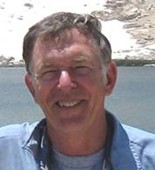 Dr. David M. Boore, Geophysicist, United States Geological Survey, is an internationally acclaimed authority on strong earthquake ground-motion characterization and data processing. The main thrust of Dr. Boore’s research is the prediction of strong ground motion – by empirical models derived from the analysis of recorded ground-motion data, as well as by theoretical seismological models. He has also been instrumental in developing new techniques for processing digital accelerograph records. He is the author or co-author of more than 200 research papers and reports, which are widely referred to by the earthquake engineering community. Dr. Boore has made significant contributions to the problem of site characterization for seismic hazard analysis on the basis of near-surface shear-wave velocity information. This approach for site characterization has now been incorporated into all seismic design codes. He has also made original contributions in establishing correlations between the results of borelogs and noninvasive methods based on the dispersion of surface waves, to obtain velocity information for site characterization. His semi-empirical method for the characterization of earthquake strong ground motion at a site, which includes the energy radiation model of the source and distortions during wave propagation, is used all over the world in seismic hazard analysis. Dr. Boore and his co-workers are also responsible for a brave negative result about the lack of correlation between travel-time anomalies and the occurrence of the 1966 Parkfield earthquake, which set the stage for the loss of faith in short-term earthquake prediction. Dr. Boore is a Fellow of the American Geophysical Union and an Honorary Life Member of the Seismological Society of America. In recognition of his immense contributions to the advancement of knowledge, the U.S. Department of Interior has bestowed upon him the Distinguished Service Award, the highest award given by the U.S. Department of Interior to its employees. He has also received wide appreciation for the work done on strong ground-motion data from the 1999 Hector Mine earthquake. Dr. Boore has served on the seven-member Senior Seismic Hazard Analysis Committee (SSHAC), which laid down the guidelines for conducting a probabilistic seismic hazard analysis. The recommendations of this committee have been used to assess the seismic hazard for two multi-million dollar projects. Dr. David M. Boore, Geophysicist, United States Geological Survey, is an internationally acclaimed authority on strong earthquake ground-motion characterization and data processing. The main thrust of Dr. Boore’s research is the prediction of strong ground motion – by empirical models derived from the analysis of recorded ground-motion data, as well as by theoretical seismological models. He has also been instrumental in developing new techniques for processing digital accelerograph records. He is the author or co-author of more than 200 research papers and reports, which are widely referred to by the earthquake engineering community. Dr. Boore has made significant contributions to the problem of site characterization for seismic hazard analysis on the basis of near-surface shear-wave velocity information. This approach for site characterization has now been incorporated into all seismic design codes. He has also made original contributions in establishing correlations between the results of borelogs and noninvasive methods based on the dispersion of surface waves, to obtain velocity information for site characterization. His semi-empirical method for the characterization of earthquake strong ground motion at a site, which includes the energy radiation model of the source and distortions during wave propagation, is used all over the world in seismic hazard analysis. Dr. Boore and his co-workers are also responsible for a brave negative result about the lack of correlation between travel-time anomalies and the occurrence of the 1966 Parkfield earthquake, which set the stage for the loss of faith in short-term earthquake prediction. Dr. Boore is a Fellow of the American Geophysical Union and an Honorary Life Member of the Seismological Society of America. In recognition of his immense contributions to the advancement of knowledge, the U.S. Department of Interior has bestowed upon him the Distinguished Service Award, the highest award given by the U.S. Department of Interior to its employees. He has also received wide appreciation for the work done on strong ground-motion data from the 1999 Hector Mine earthquake. Dr. Boore has served on the seven-member Senior Seismic Hazard Analysis Committee (SSHAC), which laid down the guidelines for conducting a probabilistic seismic hazard analysis. The recommendations of this committee have been used to assess the seismic hazard for two multi-million dollar projects.
| Rs. 25,000/- Year 2006 |
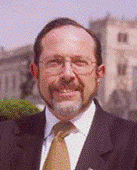 Dr. Francisco José Sánchez-Sesma, a native of Mexico, is one of the leading world experts in seismic wave propagation and site effects on strong earthquake ground motion. Currently he is a Professor of the Engineering Institute of the National Autonomous University of Mexico (UNAM), and since 1999 has also been the Director of the Institute. Dr. Sánchez-Sesma’s research involves mostly theoretical, but also experimental and practical aspects of elastic wave propagation, in particular understanding and modeling the effects of the local soil conditions and geology on the characteristics of seismic ground motion. He is the author or a coauthor of 77 papers in international peer-reviewed journals (both engineering and earth sciences journals), 13 papers in national peer-reviewed journals, 5 chapters in books, 89 papers or abstracts in international conference proceedings, 41 papers or abstracts in national conference proceedings, and 35 technical reports. His work is original and has had a significant impact on the field (both in science and engineering). Most original of his contributions are probably his elegant analytical solutions for: (1) wave propagation in a wedge, (2) analytic Green’s functions for an inhomogeneous medium with a constant variation of velocity with depth; and (3) scattering of waves from a finite 2D crack, which provide insight in the physical nature of the associated phenomena and are used by others for validation of results using other methods. He has made most impact on the field by developing several methods for numerical simulation of elastic wave propagation in alluvial basins and scattering from surface topographies, such as a simplified boundary integral equations method (popular among many researchers), an indirect boundary element method that deals rigorously with the singular points along the boundaries and hence produces very stable and accurate results used by others as reference. He also used the wave function expansion method and the ray method, and is probably the most knowledgeable in the seismic wave propagation community on the variety of different methods available to solve the complex problem of wave propagation in basins. He has also contributed several computational methods for dealing approximately with large systems of equations that arise in real-life problems, based on thresholding and sparse matrix technology. Of practical significance is his work on seismic wave propagation in Mexico City Valley, motivated by the 1985 Michoacán earthquake (M8.1), that cased extensive damage to the city in spite of the fact that the earthquake was about 400 km away. Dr. Sánchez-Sesma is also an active member of the professional community, and is current President of the Mexican Society of Earthquake Engineering (SMIS), Vice-president of the Mexican Academy of Engineering (Al), and member of: Mexican Academy of Sciences, Seismological Society of America, American Association for the Advancement of Science, and American Geophysical Union. Dr. José Sánchez-Sesma, who got all of his formal education in Mexico, is also an example that, with some resources and organization, it is possible to form in the developing world scientists of world caliber. Dr. Francisco José Sánchez-Sesma, a native of Mexico, is one of the leading world experts in seismic wave propagation and site effects on strong earthquake ground motion. Currently he is a Professor of the Engineering Institute of the National Autonomous University of Mexico (UNAM), and since 1999 has also been the Director of the Institute. Dr. Sánchez-Sesma’s research involves mostly theoretical, but also experimental and practical aspects of elastic wave propagation, in particular understanding and modeling the effects of the local soil conditions and geology on the characteristics of seismic ground motion. He is the author or a coauthor of 77 papers in international peer-reviewed journals (both engineering and earth sciences journals), 13 papers in national peer-reviewed journals, 5 chapters in books, 89 papers or abstracts in international conference proceedings, 41 papers or abstracts in national conference proceedings, and 35 technical reports. His work is original and has had a significant impact on the field (both in science and engineering). Most original of his contributions are probably his elegant analytical solutions for: (1) wave propagation in a wedge, (2) analytic Green’s functions for an inhomogeneous medium with a constant variation of velocity with depth; and (3) scattering of waves from a finite 2D crack, which provide insight in the physical nature of the associated phenomena and are used by others for validation of results using other methods. He has made most impact on the field by developing several methods for numerical simulation of elastic wave propagation in alluvial basins and scattering from surface topographies, such as a simplified boundary integral equations method (popular among many researchers), an indirect boundary element method that deals rigorously with the singular points along the boundaries and hence produces very stable and accurate results used by others as reference. He also used the wave function expansion method and the ray method, and is probably the most knowledgeable in the seismic wave propagation community on the variety of different methods available to solve the complex problem of wave propagation in basins. He has also contributed several computational methods for dealing approximately with large systems of equations that arise in real-life problems, based on thresholding and sparse matrix technology. Of practical significance is his work on seismic wave propagation in Mexico City Valley, motivated by the 1985 Michoacán earthquake (M8.1), that cased extensive damage to the city in spite of the fact that the earthquake was about 400 km away. Dr. Sánchez-Sesma is also an active member of the professional community, and is current President of the Mexican Society of Earthquake Engineering (SMIS), Vice-president of the Mexican Academy of Engineering (Al), and member of: Mexican Academy of Sciences, Seismological Society of America, American Association for the Advancement of Science, and American Geophysical Union. Dr. José Sánchez-Sesma, who got all of his formal education in Mexico, is also an example that, with some resources and organization, it is possible to form in the developing world scientists of world caliber.
| Rs. 25,000/- Year 2002 |

 Dr. Ishwer Datt Gupta, for the last forty years, has worked and significantly contributed in the following areas of Strong Motion Earthquake Studies:
Dr. Ishwer Datt Gupta, for the last forty years, has worked and significantly contributed in the following areas of Strong Motion Earthquake Studies: Prof. Vincent W. Lee, for the last thirty years has worked and significantly contributed in the following areas of Strong Motion Earthquake Studies:
Prof. Vincent W. Lee, for the last thirty years has worked and significantly contributed in the following areas of Strong Motion Earthquake Studies: Dr. Pierre-Yves Bard is a senior research scientist at ISTERRE Grenoble (Institute of Earth Sciences, University of Grenoble-Alpes), and at IFSTTAR (a public laboratory dedicated to civil engineering and transportation infrastructures). After basic education in Science at the Polytechnic School in Paris (1973-1976), Dr. Bard received a Civil Engineering diploma from the Bridges and Roads Engineering School in Paris (ENPC, 1978), and a Ph.D. in Geophysics/Seismology at the Joseph Fourier University in Grenoble (1983). Since then, he has been working mainly as a researcher in engineering seismology, trying to bridge the gap between seismologists and earthquake engineers. His research is related with estimation of strong ground motion, with a special emphasis on any kind of site effects related with near-surface heterogeneities, including those related with soil-structure interaction. Examples of his recent scientific achievements are the SESAME, NERIES and NERA European projects, with a strong emphasis on the use of ambient vibrations for site characterization, the propositions of a new seismic zonation in France with new spectra, and extensive bench marking and use of advanced models for numerical simulation of wave propagation in complex 3D or Non-linear media. Dr. Bard has supervised about 35 Ph.D. students, taught in post-graduate courses at several French Universities (Grenoble, Strasbourg, Paris) and international training courses (GFZ Potsdam/UNESCO); coauthored around 100 papers in peer reviewed international journals, twice more in conference proceedings, and many grey reports for the engineering community.
Dr. Pierre-Yves Bard is a senior research scientist at ISTERRE Grenoble (Institute of Earth Sciences, University of Grenoble-Alpes), and at IFSTTAR (a public laboratory dedicated to civil engineering and transportation infrastructures). After basic education in Science at the Polytechnic School in Paris (1973-1976), Dr. Bard received a Civil Engineering diploma from the Bridges and Roads Engineering School in Paris (ENPC, 1978), and a Ph.D. in Geophysics/Seismology at the Joseph Fourier University in Grenoble (1983). Since then, he has been working mainly as a researcher in engineering seismology, trying to bridge the gap between seismologists and earthquake engineers. His research is related with estimation of strong ground motion, with a special emphasis on any kind of site effects related with near-surface heterogeneities, including those related with soil-structure interaction. Examples of his recent scientific achievements are the SESAME, NERIES and NERA European projects, with a strong emphasis on the use of ambient vibrations for site characterization, the propositions of a new seismic zonation in France with new spectra, and extensive bench marking and use of advanced models for numerical simulation of wave propagation in complex 3D or Non-linear media. Dr. Bard has supervised about 35 Ph.D. students, taught in post-graduate courses at several French Universities (Grenoble, Strasbourg, Paris) and international training courses (GFZ Potsdam/UNESCO); coauthored around 100 papers in peer reviewed international journals, twice more in conference proceedings, and many grey reports for the engineering community. Prof. Alexander A. Gusev obtained Diploma (MS Degree) in Physics from Moscow State University in 1967, Ph.D. from Schmidt Institute of the Earth, Moscow in 1978. He received Doctor of Science (Senior Doctor) at the Schmidt Institute of Physics of the Earth, Moscow in 1994. He started as Junior Researcher in 1967 in Schmidt Institute of Physics of the Earth, Ac. Sc., USSR. He was appointed as Learned Secretary, Head of Group in Institute of Volcanic Geology and Geochemistry Russian Ac. Sci., Petropavlovsk-Kamchatsky and working since 1993. Gusev’s main research interest is in the field of Engineering Seismology and Strong Motion Analysis and Simulation. He has published over 117 papers on these topics out of which 28 were published in International Journals. He also supervised the 04 Ph.D. and 03 M.S. students.
Prof. Alexander A. Gusev obtained Diploma (MS Degree) in Physics from Moscow State University in 1967, Ph.D. from Schmidt Institute of the Earth, Moscow in 1978. He received Doctor of Science (Senior Doctor) at the Schmidt Institute of Physics of the Earth, Moscow in 1994. He started as Junior Researcher in 1967 in Schmidt Institute of Physics of the Earth, Ac. Sc., USSR. He was appointed as Learned Secretary, Head of Group in Institute of Volcanic Geology and Geochemistry Russian Ac. Sci., Petropavlovsk-Kamchatsky and working since 1993. Gusev’s main research interest is in the field of Engineering Seismology and Strong Motion Analysis and Simulation. He has published over 117 papers on these topics out of which 28 were published in International Journals. He also supervised the 04 Ph.D. and 03 M.S. students. Dr. David M. Boore, Geophysicist, United States Geological Survey, is an internationally acclaimed authority on strong earthquake ground-motion characterization and data processing. The main thrust of Dr. Boore’s research is the prediction of strong ground motion – by empirical models derived from the analysis of recorded ground-motion data, as well as by theoretical seismological models. He has also been instrumental in developing new techniques for processing digital accelerograph records. He is the author or co-author of more than 200 research papers and reports, which are widely referred to by the earthquake engineering community. Dr. Boore has made significant contributions to the problem of site characterization for seismic hazard analysis on the basis of near-surface shear-wave velocity information. This approach for site characterization has now been incorporated into all seismic design codes. He has also made original contributions in establishing correlations between the results of borelogs and noninvasive methods based on the dispersion of surface waves, to obtain velocity information for site characterization. His semi-empirical method for the characterization of earthquake strong ground motion at a site, which includes the energy radiation model of the source and distortions during wave propagation, is used all over the world in seismic hazard analysis. Dr. Boore and his co-workers are also responsible for a brave negative result about the lack of correlation between travel-time anomalies and the occurrence of the 1966 Parkfield earthquake, which set the stage for the loss of faith in short-term earthquake prediction. Dr. Boore is a Fellow of the American Geophysical Union and an Honorary Life Member of the Seismological Society of America. In recognition of his immense contributions to the advancement of knowledge, the U.S. Department of Interior has bestowed upon him the Distinguished Service Award, the highest award given by the U.S. Department of Interior to its employees. He has also received wide appreciation for the work done on strong ground-motion data from the 1999 Hector Mine earthquake. Dr. Boore has served on the seven-member Senior Seismic Hazard Analysis Committee (SSHAC), which laid down the guidelines for conducting a probabilistic seismic hazard analysis. The recommendations of this committee have been used to assess the seismic hazard for two multi-million dollar projects.
Dr. David M. Boore, Geophysicist, United States Geological Survey, is an internationally acclaimed authority on strong earthquake ground-motion characterization and data processing. The main thrust of Dr. Boore’s research is the prediction of strong ground motion – by empirical models derived from the analysis of recorded ground-motion data, as well as by theoretical seismological models. He has also been instrumental in developing new techniques for processing digital accelerograph records. He is the author or co-author of more than 200 research papers and reports, which are widely referred to by the earthquake engineering community. Dr. Boore has made significant contributions to the problem of site characterization for seismic hazard analysis on the basis of near-surface shear-wave velocity information. This approach for site characterization has now been incorporated into all seismic design codes. He has also made original contributions in establishing correlations between the results of borelogs and noninvasive methods based on the dispersion of surface waves, to obtain velocity information for site characterization. His semi-empirical method for the characterization of earthquake strong ground motion at a site, which includes the energy radiation model of the source and distortions during wave propagation, is used all over the world in seismic hazard analysis. Dr. Boore and his co-workers are also responsible for a brave negative result about the lack of correlation between travel-time anomalies and the occurrence of the 1966 Parkfield earthquake, which set the stage for the loss of faith in short-term earthquake prediction. Dr. Boore is a Fellow of the American Geophysical Union and an Honorary Life Member of the Seismological Society of America. In recognition of his immense contributions to the advancement of knowledge, the U.S. Department of Interior has bestowed upon him the Distinguished Service Award, the highest award given by the U.S. Department of Interior to its employees. He has also received wide appreciation for the work done on strong ground-motion data from the 1999 Hector Mine earthquake. Dr. Boore has served on the seven-member Senior Seismic Hazard Analysis Committee (SSHAC), which laid down the guidelines for conducting a probabilistic seismic hazard analysis. The recommendations of this committee have been used to assess the seismic hazard for two multi-million dollar projects. Dr. Francisco José Sánchez-Sesma, a native of Mexico, is one of the leading world experts in seismic wave propagation and site effects on strong earthquake ground motion. Currently he is a Professor of the Engineering Institute of the National Autonomous University of Mexico (UNAM), and since 1999 has also been the Director of the Institute. Dr. Sánchez-Sesma’s research involves mostly theoretical, but also experimental and practical aspects of elastic wave propagation, in particular understanding and modeling the effects of the local soil conditions and geology on the characteristics of seismic ground motion. He is the author or a coauthor of 77 papers in international peer-reviewed journals (both engineering and earth sciences journals), 13 papers in national peer-reviewed journals, 5 chapters in books, 89 papers or abstracts in international conference proceedings, 41 papers or abstracts in national conference proceedings, and 35 technical reports. His work is original and has had a significant impact on the field (both in science and engineering). Most original of his contributions are probably his elegant analytical solutions for: (1) wave propagation in a wedge, (2) analytic Green’s functions for an inhomogeneous medium with a constant variation of velocity with depth; and (3) scattering of waves from a finite 2D crack, which provide insight in the physical nature of the associated phenomena and are used by others for validation of results using other methods. He has made most impact on the field by developing several methods for numerical simulation of elastic wave propagation in alluvial basins and scattering from surface topographies, such as a simplified boundary integral equations method (popular among many researchers), an indirect boundary element method that deals rigorously with the singular points along the boundaries and hence produces very stable and accurate results used by others as reference. He also used the wave function expansion method and the ray method, and is probably the most knowledgeable in the seismic wave propagation community on the variety of different methods available to solve the complex problem of wave propagation in basins. He has also contributed several computational methods for dealing approximately with large systems of equations that arise in real-life problems, based on thresholding and sparse matrix technology. Of practical significance is his work on seismic wave propagation in Mexico City Valley, motivated by the 1985 Michoacán earthquake (M8.1), that cased extensive damage to the city in spite of the fact that the earthquake was about 400 km away. Dr. Sánchez-Sesma is also an active member of the professional community, and is current President of the Mexican Society of Earthquake Engineering (SMIS), Vice-president of the Mexican Academy of Engineering (Al), and member of: Mexican Academy of Sciences, Seismological Society of America, American Association for the Advancement of Science, and American Geophysical Union. Dr. José Sánchez-Sesma, who got all of his formal education in Mexico, is also an example that, with some resources and organization, it is possible to form in the developing world scientists of world caliber.
Dr. Francisco José Sánchez-Sesma, a native of Mexico, is one of the leading world experts in seismic wave propagation and site effects on strong earthquake ground motion. Currently he is a Professor of the Engineering Institute of the National Autonomous University of Mexico (UNAM), and since 1999 has also been the Director of the Institute. Dr. Sánchez-Sesma’s research involves mostly theoretical, but also experimental and practical aspects of elastic wave propagation, in particular understanding and modeling the effects of the local soil conditions and geology on the characteristics of seismic ground motion. He is the author or a coauthor of 77 papers in international peer-reviewed journals (both engineering and earth sciences journals), 13 papers in national peer-reviewed journals, 5 chapters in books, 89 papers or abstracts in international conference proceedings, 41 papers or abstracts in national conference proceedings, and 35 technical reports. His work is original and has had a significant impact on the field (both in science and engineering). Most original of his contributions are probably his elegant analytical solutions for: (1) wave propagation in a wedge, (2) analytic Green’s functions for an inhomogeneous medium with a constant variation of velocity with depth; and (3) scattering of waves from a finite 2D crack, which provide insight in the physical nature of the associated phenomena and are used by others for validation of results using other methods. He has made most impact on the field by developing several methods for numerical simulation of elastic wave propagation in alluvial basins and scattering from surface topographies, such as a simplified boundary integral equations method (popular among many researchers), an indirect boundary element method that deals rigorously with the singular points along the boundaries and hence produces very stable and accurate results used by others as reference. He also used the wave function expansion method and the ray method, and is probably the most knowledgeable in the seismic wave propagation community on the variety of different methods available to solve the complex problem of wave propagation in basins. He has also contributed several computational methods for dealing approximately with large systems of equations that arise in real-life problems, based on thresholding and sparse matrix technology. Of practical significance is his work on seismic wave propagation in Mexico City Valley, motivated by the 1985 Michoacán earthquake (M8.1), that cased extensive damage to the city in spite of the fact that the earthquake was about 400 km away. Dr. Sánchez-Sesma is also an active member of the professional community, and is current President of the Mexican Society of Earthquake Engineering (SMIS), Vice-president of the Mexican Academy of Engineering (Al), and member of: Mexican Academy of Sciences, Seismological Society of America, American Association for the Advancement of Science, and American Geophysical Union. Dr. José Sánchez-Sesma, who got all of his formal education in Mexico, is also an example that, with some resources and organization, it is possible to form in the developing world scientists of world caliber.